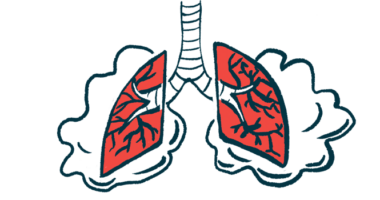Vertex to Seek Expanded FDA Approval for Trikafta After Positive Child Safety Data

Trikafta (elexacaftor/tezacaftor/ivacaftor and ivacaftor) is safe for use in children with cystic fibrosis (CF) as young as age 6, data from a global Phase 3 clinical trial show.
Based on these results, Vertex Pharmaceuticals, which markets Trikafta, will seek an expansion of the medication’s current U.S. approval, which covers patients ages 12 and older. Vertex is planning to submit a supplemental new drug application (sNDA) to the U.S. Food and Drug Administration (FDA).
That sNDA is expected to be submitted by the end of the year, with submissions to other regulatory agencies around the world to follow.
“Our aim is to extend eligibility to all patients who may benefit from this transformative medicine, and the positive results from the study in children ages 6 through 11 years old allows us to take another step forward toward this goal,” Carmen Bozic, MD, Vertex’s chief medical officer and executive vice president of global medicines development and medical affairs, said in a press release.
“We are looking forward to filing an sNDA in the coming months and bringing Trikafta to younger people with CF,” Bozic added.
Cystic fibrosis is caused by mutations in the gene cystic fibrosis transmembrane conductance regulator (CFTR), which encodes a protein of the same name. CF-causing mutations in the CFTR gene result in the production of impaired CFTR protein, which is what ultimately causes the disease’s symptoms, usually the buildup of thick mucus in the lungs, pancreas, liver, and intestine.
Marketed as Kaftrio in Europe, Trikafta is a triple-combination therapy containing CFTR modulators, or molecules that help the defective CFTR protein to function more effectively.
Trikafta is indicated for people with CF who have at least one F508del mutation. That mutation is the most common CF-causing one in CFTR, present in about 90% of people with the disease. People inherit two copies of the CFTR gene, one from each biological parent.
Previously, data from the Phase 3 AURORA clinical trials (NCT03525444 and NCT03525548) — which enrolled participants ages 12 and older with at least one F508del mutation — showed that Trikafta improved lung function and was generally well-tolerated.
The new results come from a Phase 3 trial that enrolled 66 children, ages 6 through 11, who have either two copies of the F508del mutation or one copy of the F508del mutation and one minimal function mutation. All participants were treated with Trikafta for 24 weeks — the study was open-label, meaning all participants were aware of the treatment they were receiving.
The main aim of the trial was to evaluate the treatment’s safety and tolerability.
The results showed that Trikafta was generally safe and well-tolerated among these younger patients. Safety data from this study were similar to that reported in previous Phase 3 trials evaluating the medication. Commonly reported side effects of Trikafta include headache, upper respiratory tract infection, diarrhea, rash, abdominal pain, and respiratory symptoms like runny noses.
In addition to the positive safety data, the Phase 3 trial indicated that treatment with Trikafta induced clinically meaningful improvements in lung function, as measured by percent predicted forced expiratory volume in one second, a common breathing test.
Additionally, the treatment normalized sweat chloride levels and body mass index, and eased respiratory symptoms as reported by participants and measured by the Cystic Fibrosis Questionnaire Revised.







